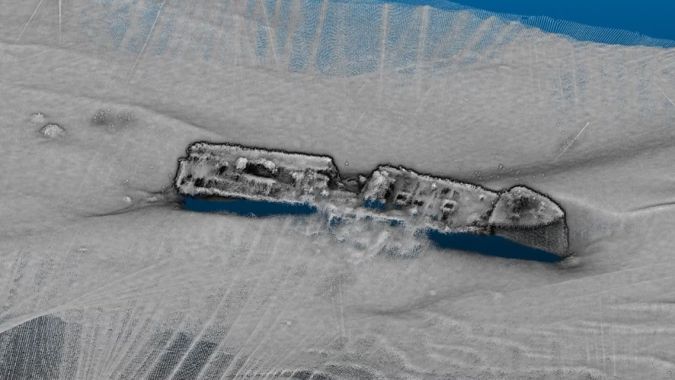Unraveling the environmental impact of North Sea shipwrecks
Unraveling the environmental impact of North Sea shipwrecks
The haunting presence of shipwrecks such as the John Mahn in the North Sea offers glimpses into our history. These maritime time capsules, while fostering vibrant ecosystems, raise concerns about pollution and leakage. However, thanks to the groundbreaking North Sea Wrecks project, the hidden dangers and self-cleaning properties of these enigmatic relics are being uncovered. Are we truly facing a toxic war legacy, or are our worries unfounded? Testerep, a magazine of the Flanders Marine Institute (VLIZ), embarked on an investigative journey to shed light on this.
There are approximately 290 shipwrecks in the Belgian part of the North Sea alone, and more than 1,000 in the entire North Sea. These wrecks, remnants of the world wars, have long been a mystery in terms of their environmental impact and potential for toxic substance release. However, the North Sea Wrecks project aimed to change that, and researchers examined the ammunition load and release of toxic substances from a few selected wrecks in the North Sea. Testerep magazine sought answers concerning the presence of a toxic war legacy.
Oil leakage and war ammunition
One such wreck is the John Mahn, which sank during World War II off the Belgian coast, leaving 27 crew members missing. The wreck, along with numerous others, remains a silent witness to the wars, intriguing researchers and historians alike.
Shipwrecks in the sea can create biodiversity hotspots, attracting various marine life and organisms. However, the exact locations and conditions of these wrecks, along with their negative environmental impact, remain largely unknown. Oil pollution is one well-studied issue, with examples such as the USS Arizona, sunk during World War II, still leaking oil after 82 years. Moreover, wrecks may contain liquid fuel, coal, chemicals or dangerous cargo. The presence of war ammunition is also a concern, as its condition, quantity and potential leakage remain uncertain.
The North Sea Wrecks project, initiated in 2018, united nine partners across several North Sea countries. They aimed to develop an instrument to estimate the potential environmental impact of wrecks before commencing sea-related activities. The project focused on 15 case studies from over 1,000 known shipwrecks in the region.
Self-cleaning properties
Through water and sediment sampling, as well as the use of mussels and fish as bioindicators, researchers discovered that two thirds of the studied wrecks still contained ammunition, resulting in the leakage of toxic substances such as TNT. However, the measured concentrations were well below harmful levels for humans and animals, and the wrecks exhibited self-cleaning properties through bacterial communities.
In response to the environmental risks posed by leaking ammunition, the follow-up project REMARCO (Remediation, Management, Monitoring and Cooperation addressing North Sea UXO) has been approved. VLIZ and the Royal Belgian Institute of Natural Sciences (RBINS – OD Nature) will collaborate to develop better detection techniques for ammunition leaks and explore strategies to combat pollution caused by war wrecks.



Comments
Post a Comment